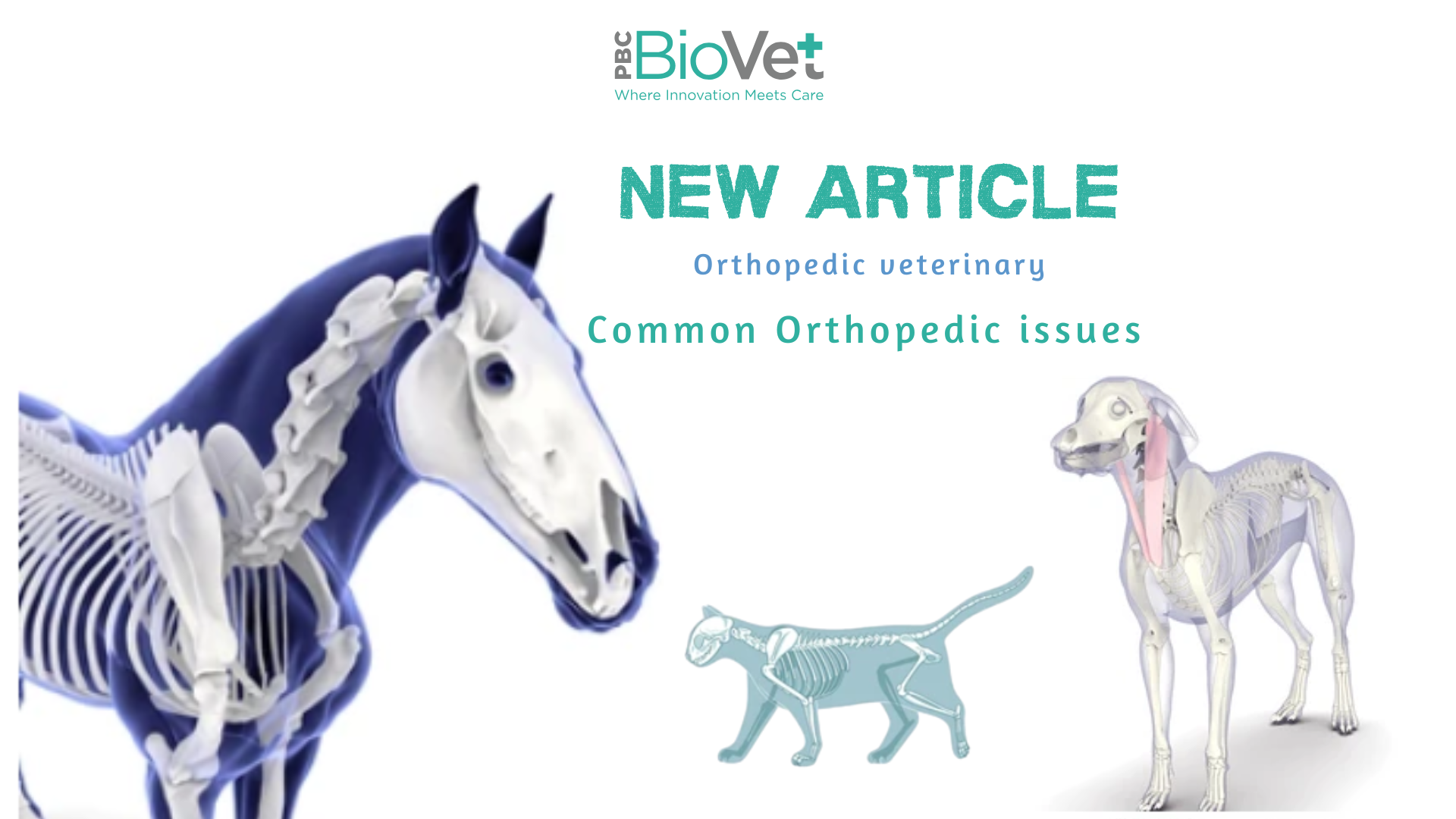White Paper: Common Orthopedic Issues in Veterinary Medicine
Introduction
Orthopedic disorders are among the most prevalent health concerns in veterinary medicine, affecting companion animals, equine patients, and livestock. These conditions range from congenital deformities to acquired injuries and degenerative diseases, significantly impacting an animal’s mobility and quality of life. This white paper explores the most common orthopedic issues seen in veterinary practice, their causes, diagnostic approaches, and treatment options.
1. Fractures
Causes and Risk Factors:
Fractures occur due to trauma (e.g., vehicle accidents, falls) or underlying bone weaknesses such as metabolic bone disease or neoplasia.
Types of Fractures:
- Simple (closed) fractures – The bone breaks without piercing the skin.
- Compound (open) fractures – The bone protrudes through the skin, increasing infection risk.
- Comminuted fractures – The bone shatters into multiple pieces, complicating treatment.
- Growth plate fractures – Common in young animals, affecting bone development.
Diagnosis and Treatment:
- Imaging: X-rays, CT scans for complex fractures.
- Treatment: Options include external fixation (splints, casts), internal fixation (plates, screws, pins), or bone grafting for severe cases.
2. Osteoarthritis (Degenerative Joint Disease)
Causes and Risk Factors:
Osteoarthritis (OA) is a progressive, degenerative disease resulting from joint wear and tear, trauma, or developmental abnormalities. Large breeds, overweight animals, and aging patients are at higher risk.
Symptoms:
- Stiffness, lameness, reluctance to move
- Joint swelling and pain
- Reduced range of motion
Diagnosis and Treatment:
- Imaging: Radiographs, MRI for soft tissue involvement.
- Treatment: Pain management (NSAIDs, corticosteroids), joint supplements (glucosamine, chondroitin), physical therapy, and in severe cases, surgical intervention (joint replacement, arthroscopy).
3. Hip Dysplasia
Causes and Risk Factors:
A genetic condition primarily affecting large dog breeds, hip dysplasia results from improper hip joint development, leading to instability and eventual arthritis.
Symptoms:
- Difficulty standing, climbing stairs
- “Bunny hopping” gait
- Hip pain and reduced mobility
Diagnosis and Treatment:
- Imaging: X-rays to assess joint conformation.
- Treatment: Weight management, physical therapy, anti-inflammatory medications, and surgical options like total hip replacement or femoral head ostectomy (FHO).
4. Cruciate Ligament Rupture (ACL Injury)
Causes and Risk Factors:
Rupture of the cranial cruciate ligament (CCL) in dogs is a common cause of hind limb lameness, often resulting from obesity, genetic predisposition, or high-impact activities.
Symptoms:
- Sudden limping or non-weight-bearing on the affected leg
- Joint swelling
- Muscle atrophy
Diagnosis and Treatment:
- Imaging: Radiographs and joint fluid analysis.
- Treatment: Conservative management (rest, braces, pain relief) or surgical repair (TPLO – tibial plateau leveling osteotomy, TTA – tibial tuberosity advancement).
5. Luxating Patella
Causes and Risk Factors:
A common orthopedic issue in small dog breeds, patellar luxation occurs when the kneecap shifts out of its normal position due to congenital malformations or trauma.
Symptoms:
- Intermittent skipping gait
- Sudden lameness
- Audible “popping” sound in the knee
Diagnosis and Treatment:
- Imaging: X-rays to assess patellar alignment.
- Treatment: Mild cases may only require weight control and exercise modification, while severe cases often require surgical realignment procedures.
6. Elbow and Shoulder Dysplasia
Causes and Risk Factors:
Developmental abnormalities in the elbow and shoulder joints, often hereditary, lead to joint instability and degeneration.
Symptoms:
- Forelimb lameness
- Joint swelling and pain
- Reduced activity level
Diagnosis and Treatment:
- Imaging: X-rays, CT scans for detailed joint assessment.
- Treatment: Anti-inflammatory medications, weight management, physical therapy, and arthroscopic surgery in severe cases.
7. Intervertebral Disc Disease (IVDD)
Causes and Risk Factors:
IVDD occurs when spinal discs degenerate or herniate, compressing the spinal cord. It is common in chondrodystrophic breeds (e.g., Dachshunds, French Bulldogs).
Symptoms:
- Painful, stiff movements
- Weakness or paralysis in severe cases
- Loss of bladder/bowel control
Diagnosis and Treatment:
- Imaging: MRI or CT scans.
- Treatment: Conservative therapy (crate rest, pain management) for mild cases; surgical decompression (hemilaminectomy) for severe cases.
Conclusion
Orthopedic conditions in veterinary medicine can significantly impact an animal’s quality of life. Early diagnosis and appropriate intervention are crucial to successful management. Advances in diagnostic imaging, surgical techniques, and biomaterials continue to improve outcomes in veterinary orthopedics. By understanding these common orthopedic issues, veterinarians can offer more effective, personalized treatment plans to enhance mobility and overall well-being in their patients.
#VeterinaryOrthopedics #AnimalHealth #Boneadhesive #FractureRepair #JointCare #Osteoarthritis #VeterinarySurgery


